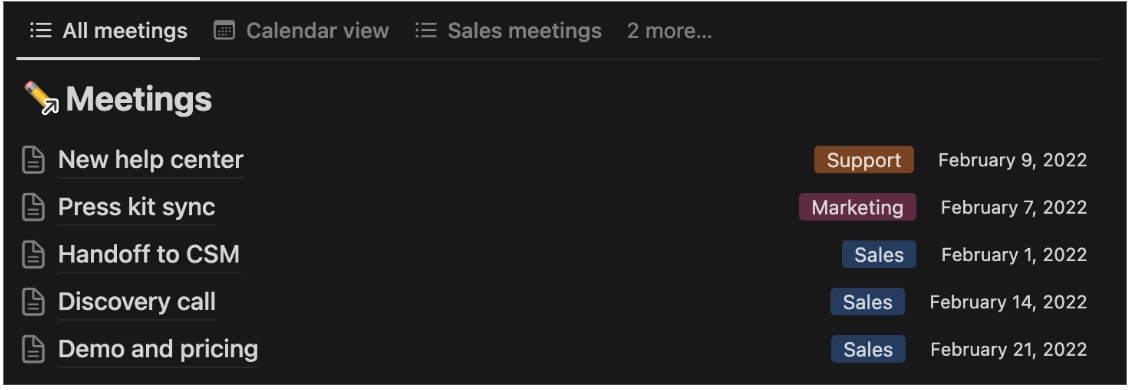Building a team? On the surface, it seems straightforward enough: Gather individuals with the right skills, put them together, and voilà — you have a team. However, anyone who's led a professional working group before knows the real challenge isn't just in assembling the team, but in fostering a powerful connection between its members.
That intangible factor — the one that makes a team greater than the simple sum of its parts — is called synergy.
When there's genuine synergy, your team isn't just working. It's thriving, driving results that outshine what any individual member could achieve alone.
In the realm of project management, this dynamic is vital. Projects often involve tight deadlines, varied tasks, and high stakes. There’s no time to waste, and having a team with a synchronized pulse can make the difference between success and failure.
So, how do you cultivate this dynamic? Let’s explore the essence of team synergy and how you can nurture this transformative force within your teams.
What’s team synergy?
“Synergy” is more than just a buzzword. It's the lifeblood of successful collaborations, driving teams to produce outputs that meet and exceed expectations.
At its core, team synergy describes a scenario in which the team’s collective work is more impactful than what its individual members could produce — combined.
You can think of team synergy as the driving force behind a well-conducted orchestra. While each musician is talented, it's their combined effort, timing, and harmony that create a masterpiece. Similarly, in a synergized team, members complement each other's strengths and compensate for individual weaknesses, resulting in optimized efficiency and output.
Here are some specific ways synergy benefits project management:
Enhanced productivity — when team members gel, they tend to be more efficient. They distribute tasks based on individual strengths, avoid duplication of effort, and capitalize on each other's expertise. This streamlined approach is essential in project management, where timelines are tight and every minute counts.
Improved problem-solving — projects inevitably face hurdles. A team with strong synergy can brainstorm, debate, and devise solutions to leverage the diverse perspectives and skills of its members.
Positive work environment — synergized teams foster a positive atmosphere. When individuals feel they're part of a cohesive unit, job satisfaction can increase while stress levels drop. No one’s fighting over who’s responsible for what, and everyone is valued.
Positive versus negative synergy
Synergy can manifest in both positive and negative forms. The outcome, whether it amplifies strengths or magnifies weaknesses, has a serious impact on the group’s performance and results.
At its best, synergy boosts collective outcomes. Teams with positive synergy often have a positive work environment where members feel valued, understand their roles, and genuinely believe that they can achieve more together. Such teams use their resources to avoid duplicate work and capitalize on each other's expertise.
Contrary to the amplifying effect of positive synergy, negative synergy drags teams down, lowering the quality of their collective output to less than what each person could achieve individually. They often produce subpar deliverables — even if every individual member is competent — whether due to miscommunications, conflicts, or other factors.
Negative group synergy can also lead to a toxic work environment. Team members may feel unheard, undervalued, or constantly at odds with one another. And instead of streamlining their efforts, they waste precious resources on unproductive work.
How to build team synergy
Creating synergy is a delicate process, but it’s far from impossible.
Each team comprises a mix of individuals with differing viewpoints, motivations, and skill sets. To form a holistic work culture where everyone understands roles, expectations, and accountabilities, you must understand how each member will complement one another and enhance the group dynamic.
While there’s no one-size-fits-all approach to synergy, you can follow this common frame to achieve results:
1. Begin with communication
Effective workplace communication is the cornerstone of team synergy. When you and your team members feel confident and comfortable expressing ideas and concerns, you build trust and create stronger bonds.
Establish lines of communication early on, and share the project vision clearly and succinctly. Set regular meetings, define each person’s role, and clarify scope and impact. A crystal clear understanding of what you expect encourages members to buy into both the project and the team dynamic.
2. Foster trust and collaboration
Promote collaboration by welcoming contributions from your team members in the planning phase of the project. Where do their strengths lie, and where do they think they’ll work best? When everyone feels their ideas count, working together as a cohesive unit is more appealing.
You also establish trust when you lead by example, setting the bar for conduct, best practices, and work ethic. Always put your best foot forward and encourage your team to do the same.
3. Advocate for active listening
When team members actively listen, they fully engage with what’s being said, ensuring they grasp not only the content but also the underlying emotions and intentions. This practice paves the way for genuine understanding and reduces the potential for misinterpretations or miscommunications.
An environment where everyone feels heard and understood accelerates collaborative efforts, encourages open dialogue, and ensures all perspectives are considered. Moreover, it signals respect and value for each team member's input, fostering a sense of belonging.
4. Maintain a transparent culture
Transparency is often considered one of the most important factors in a positive workplace culture. Allow your teams to see all relevant tweaks and changes throughout the project's cycle and be willing to discuss the processes openly.
If disagreements arise, treat them logically and with neutrality. Encourage rational discussion without fear of unnecessary repercussions.
5. Clarify group norms
Group norms are the general etiquette you and your team practice when working together. Although group norms develop naturally, left unchecked, bad habits can develop.
Set rules, like principles for appropriate language and conduct, to eliminate guesswork. Instead of treading on delicate ground and establishing the norms by trial and error, you and your team can focus on collaborative, high-impact production in a safe environment.
An example of synergy at work
For this hypothetical, imagine you want your marketing, sales, and customer support teams to work together for a rebranding campaign.
Begin by familiarizing yourself with all of the people who will be involved with the project. Organize an all-hands meeting, but keep it informal. Introduce everyone and present the general project overview. You can use a project management tool, like this team dashboard, to organize the agenda into a roadmap beforehand:

A successful project roadmap allows your teams to envision the end goal and the journey they must take to get there. It also allows for added contributions and ideas from members, encouraging them to buy into the process.
After the kick-off meeting, continue learning about and incorporating your team’s strengths, work habits, and expectations into the plan. Open communication garners trust, so emphasize that everyone should feel welcome to share their strengths, weaknesses, and perspectives. Make sure the rest of the team is in the loop should you make changes to the roadmap.
Next, use the team dashboard to present a breakdown of everyone’s tasks, deliverables, and timelines:

Communicate often with your team members to ensure they each understand the project goals and feel comfortable with their assigned roles.
Next, it’s time to create and share a schedule for project milestones and meetings. Remember, this should be accommodating and flexible — you may need to adjust as project needs and timelines change. Keep those communication lines open and alert the team to any tweaks.
Your schedule might look something like this:

Throughout the project’s lifecycle, hold regular meetings to evaluate progress (scheduled and non-scheduled), share timely updates, and recognize good work.
With every team member in a role they’re comfortable with, each deadline and meeting penciled in where everyone can see, and a collaborative approach to tackling the project, you’re well on your way to achieving team synergy. As individuals get comfortable and fall into a groove, their compatibility, productivity, and creativity will only flourish and grow.
Grow your team’s synergy with Notion
No matter how well-suited a team is to the project at hand, it can’t achieve synergy without the proper tools. Missed deadlines, scope creep, and repeated work are all potential pitfalls for disorganized working groups — but you can keep every on the right page with Notion.
We offer a number of project management templates, including a team central hub, your product team-in-a-box, and an all-inclusive team home repository. With a shared calendar, workflow, and vision, you set your team up for synergy and success.






